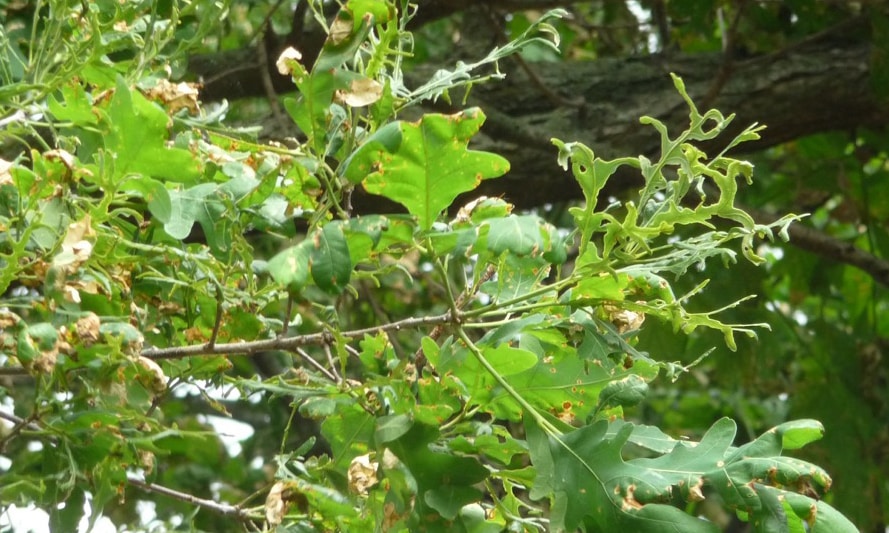FOR IMMEDIATE RELEASE
HERBICIDE DAMAGE HURTS MORE THAN JUST CROPS

Contact: Kim Erndt-Pitcher, Prairie Rivers Network kerndt-pitcher@prairierivers.org 217-344-2371
Louis Nelms, retired native seed grower from Mason City, IL
The farm media have widely covered dicamba herbicide damage in soybean fields across the Midwest this summer. However, reports of off-target herbicide damage to other susceptible plants from early season weed control practices on both corn and soybeans are also on the rise. Personal reports and documentation of damage to oak trees in residential and forested areas have been occurring since late spring when leaves began appearing on trees. Most noticeable are the stunting, twisting and cupping of leaves on redbuds, oak trees, and native flowering plants — symptoms of 2,4-D and dicamba herbicide damage.
Extension horticulturalists have documented herbicide damage to landscape plantings for many years. “We need a better understanding of what this type of repeated exposure to herbicides is doing to native plants and natural ecosystems and what that will mean for the pollinators and wildlife that depend on them.” Prairie Rivers Network, Habitat and Agricultural Programs Specialist Kim Erndt-Pitcher said. “The citizens of Illinois who value these areas for recreation and hunting will also be affected.”
Oak regeneration has been a big concern among wildlife biologists for decades. “White Oaks are especially prone to injury from drift and volatilization of dicamba and 2,4-D,” Louis Nelms, a retired native seed grower from Mason City, IL said. “They are an important species in upland woodlands, upon which hundreds of game and non-game species are dependent. Is the cumulative stress of these wayward herbicides adding to the decline of White Oaks in our wooded areas? What would a potential decline in acorn production mean for turkey and deer populations?” Nelms said.
Volatile herbicide formulations like dicamba, do not obey property lines and can harm habitat and indirectly harm wildlife. “We need to understand where, when, and why chemicals are moving and what damage is occurring. The Midwest should have a coordinated program of scientific monitoring and analyses of these events, and it should be looking at the impacts to more than just crops.” Erndt-Pitcher said.
###







